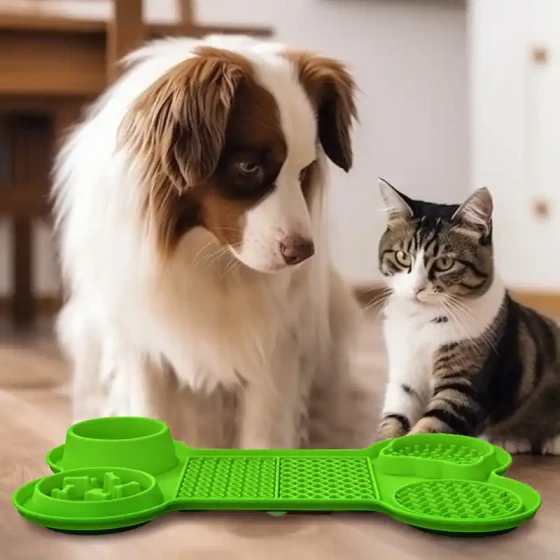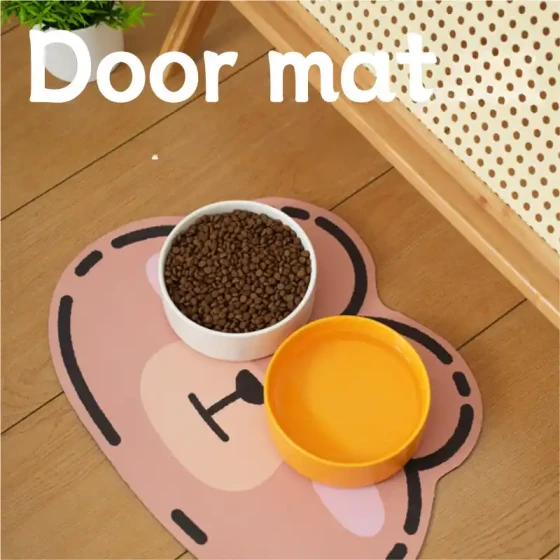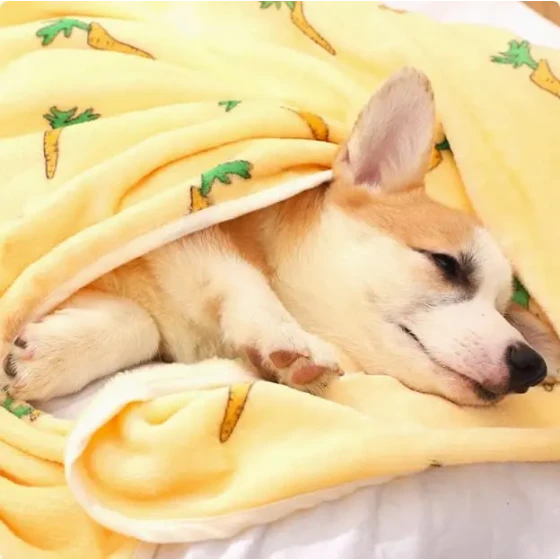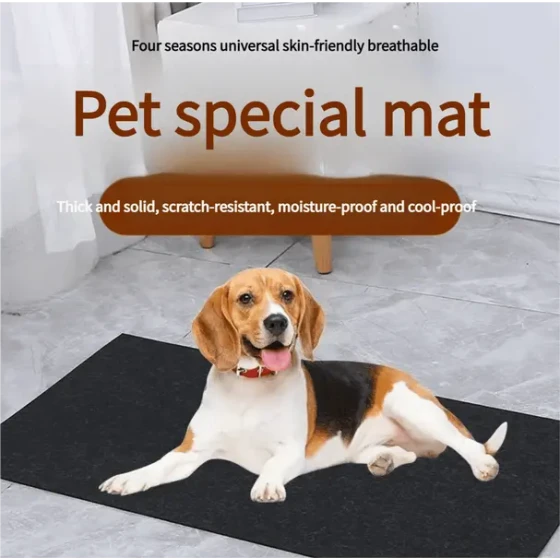How to Train a Pet Dog to Urinate and Defecate at a Fixed Location?
Puppies are irregular with urination and defecation when they are young, and training can be challenging. As an owner, you must be patient. Before training them to go to a designated spot, you must ensure they understand their name and also comprehend your tone of praise and criticism. Every morning when the puppy wakes up and after each feeding, take them to the place you want them to urinate and defecate, wait for them to relieve themselves, and promptly praise them if done correctly.
If they do not relieve themselves at the designated spot and you catch them, use a stern tone to tell them it is wrong (you can wave a rolled-up newspaper on the ground as a warning), then thoroughly clean the area and spray deodorizer. Repeating this multiple times, the puppy will remember where it is okay and not okay to relieve themselves. ********************* You can do it like this: 1. I heard from a dog trainer that generally puppies will defecate about 30 minutes after eating or 15 minutes after drinking water.
Everyone can pay special attention during these times. If you notice the dog sniffing around on the ground, be highly alert—they are looking for a place to go. Also, puppies usually defecate once after waking up in the morning (including both urine and feces). So everyone can carry the puppy to your desired toilet spot right after it wakes, let it stay there for a while, and at the same time use a special tone to say commands like "Hurry up" (you must be consistent, even as the dog grows up you should still often use this command because dogs really can understand it.
Gradually they will realize your command is urging them to go). 2. Puppies urinate and defecate many times, so most people like to let them go on pee pads or newspapers first. Some dogs use pee pads, but some really hate them. My dog would shred the pee pad to pieces. So I finally chose newspaper. At first, my dog didn’t know that the newspaper was meant for relieving themselves, so I used the newspaper to soak up its urine, then put that soaked sheet on top of many newspapers (around 7 or 8 sheets) and didn’t discard it. The next time I saw the dog sniffing around, I promptly picked it up and put it on the newspaper. It would smell the already dried urine on that piece. You should watch closely; if it runs off, catch it and put it back on the newspaper.
(At the start you can lay a larger newspaper area, then gradually reduce the size). Then whenever you see the dog wanting to go (sniffing around) or relieving themselves in the wrong place, immediately pick it up and place it on the newspaper. Leave one piece of newspaper with its waste on top of the laid newspapers every day. After a few days, the dog will know to use the newspaper for relieving itself.
When it becomes familiar, congratulations, the first step is successful. You can then just put clean newspaper down every day, because the dog knows to go when it smells newspaper. 2. The next step is simpler. Gradually reduce the size of the newspaper (from two newspapers size, to one, then half), and slowly move the newspaper toward the door. Once the dog is used to going on the newspaper at the door, you can remove the newspaper. When the dog needs to go, it will look for the newspaper at the door. Upon seeing this, immediately take it outside to urinate or defecate.
3. Then you can pick 5 basic fixed times during the day to take the puppy out (best about 20 to 30 minutes after eating). If the puppy shows signs of needing to go outside these 5 times, also bring it out. These are extra times beyond the 5. Over time, the puppy will realize these 5 times are for going out. Outside, always use your toilet command until the task is completed.
After the puppy finishes, it’s best to wipe it and give verbal encouragement and praise so it knows it did right. Because dogs have a biological clock, these 5 times should be fairly fixed so the dog realizes to go outside first to relieve itself. Once the puppy can fully complete elimination during these 5 times and not inside the house, you can maintain this routine for a while, then gradually reduce the times from 5 to 3.
(Generally, if the dog is young and you feed it 4 times a day, take it out 5 times: once after waking up and then 30 minutes after each meal, total 5 times. When the dog adapts to going outside and as it grows older and you feed it 3 times a day, reduce trips outside to 3 times: morning after waking, 30 minutes after lunch, and before bedtime).
3. After that, your dog may be able to go out outside on a schedule! A reminder: during early training, limit the dog to at most 5 minutes outside to relieve itself. If no action in 5 minutes, take it back home immediately and put it in the crate so the dog knows if it doesn't go outside it won’t get another chance until next time you take it out. There are other points to note.
Before the dog can hold it completely at home until you take it out, put the dog in the crate. But this does NOT mean to lock the dog up 24 hours a day. Dogs generally do not urinate or defecate where they sleep, so the crate space should only be just big enough for the dog to turn around and lie down. If the crate is too big, the dog will relieve itself anywhere except the spot where it lies, leading to a bad habit.
It’s recommended to buy a crate that can be used when the dog is an adult. When the dog is young, block parts of the crate with cardboard boxes etc., leaving only the sleeping spot, then gradually remove them as the dog grows. This way you don’t have to buy many crates as the dog grows. After eating, put the dog in the crate to prevent it from relieving itself anywhere and to prevent vigorous activity right after eating, which is bad for their stomach.
About half an hour later, take it out to relieve itself. After going to the toilet, let it out to play for a while. Then put it back in the crate until next time for the toilet. (This method applies to training on newspaper and outside). Occasionally, if you want to let it out to play, watch for signs it needs to go and immediately take it to the toilet spot. Keep going!
:) 1. When to start fixed location elimination training? Before you bring a puppy home, prepare its toileting supplies. Start patient, meticulous guidance from the moment it enters your home. Once it finds a toileting spot in the new home, it will always look for that place. So start training from the first time.
2. How to notice when the puppy needs to eliminate? Puppies often eliminate soon after eating and drinking.
They also usually go after waking or playing. Puppies show urgency by restless sniffing close to the ground. When you see these signs, immediately put them on the toileting supply.
3. I put the dog on the toileting supply but it doesn’t go. What to do? When you notice the dog is about to go, do NOT shout loudly. This can scare the urge away. The correct way is quick action and soft voice, carrying the dog to the toileting supply.
Gently call it to urinate or defecate; don’t over-pet it to avoid distraction. Patience is very important.
4. What if I find it has already started eliminating? Quickly and firmly pick it up and place on the toileting spot, consoling it softly so it continues. Note: Never scold the dog while placing it on the toileting supply. This makes it think relieving itself there is wrong and fear the spot, which is very bad for future training.
5. What if I find it already finished? If you catch it in the act, scold immediately. If found later, clean the stains thoroughly avoiding residual odor. Scolding afterward will confuse the dog since it doesn’t know why you are angry. Immediate scolding and timely praise is effective. Praise and encouragement should come first, scolding second. Praise stimulates the dog’s willingness to learn.
6. Can male dogs be trained? Yes. There is a common misconception that male dogs just mark territory by lifting legs. This is a behavior to mark territory and spread their scent longer, but at home, male dogs can squat to urinate. If your dog is used to newspaper, you will see results soon. Simply place the special toileting product in the spot where newspaper was, putting the newspaper inside it. Detailed training methods are in the product manual.


-560x560.webp)


